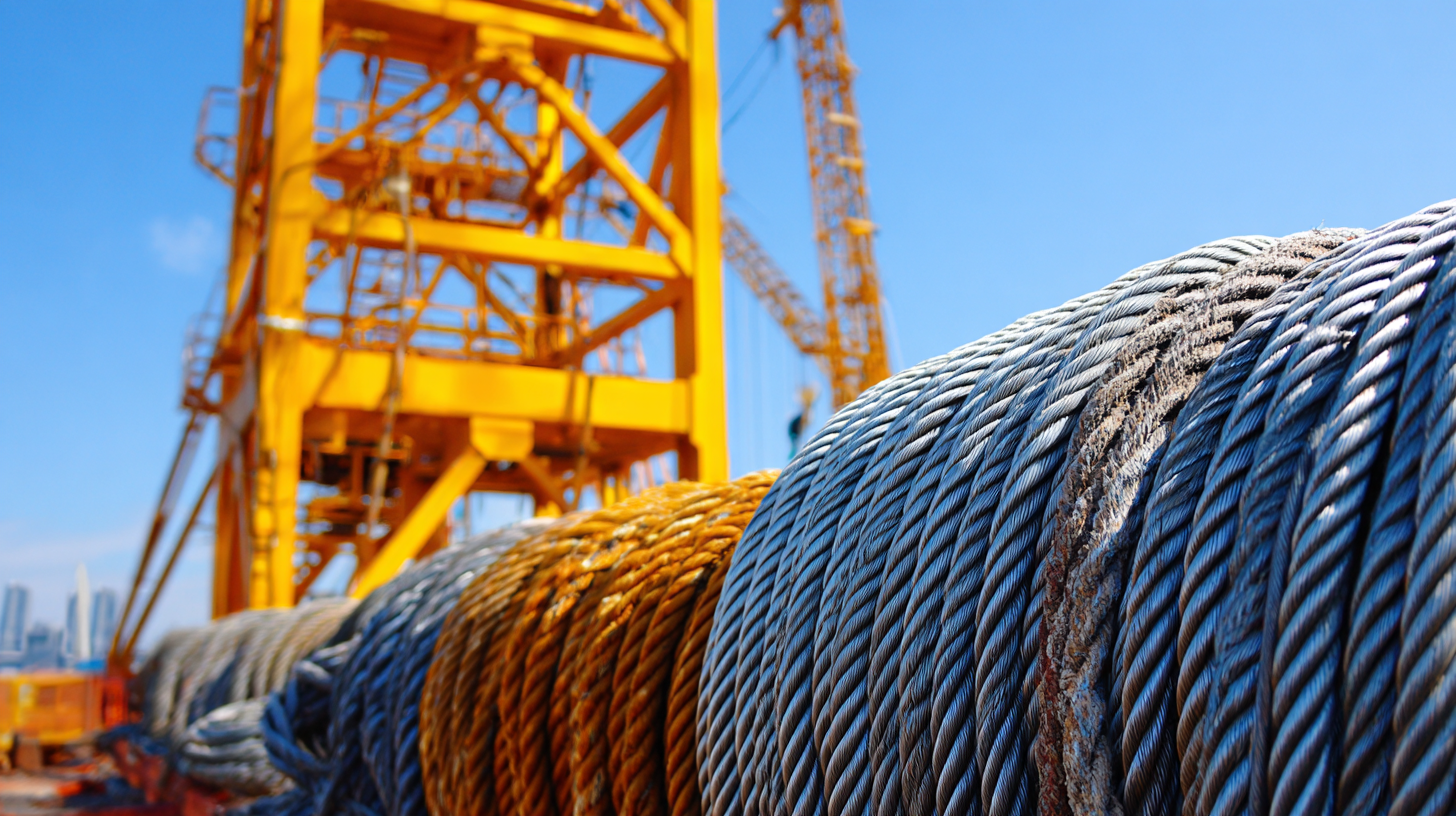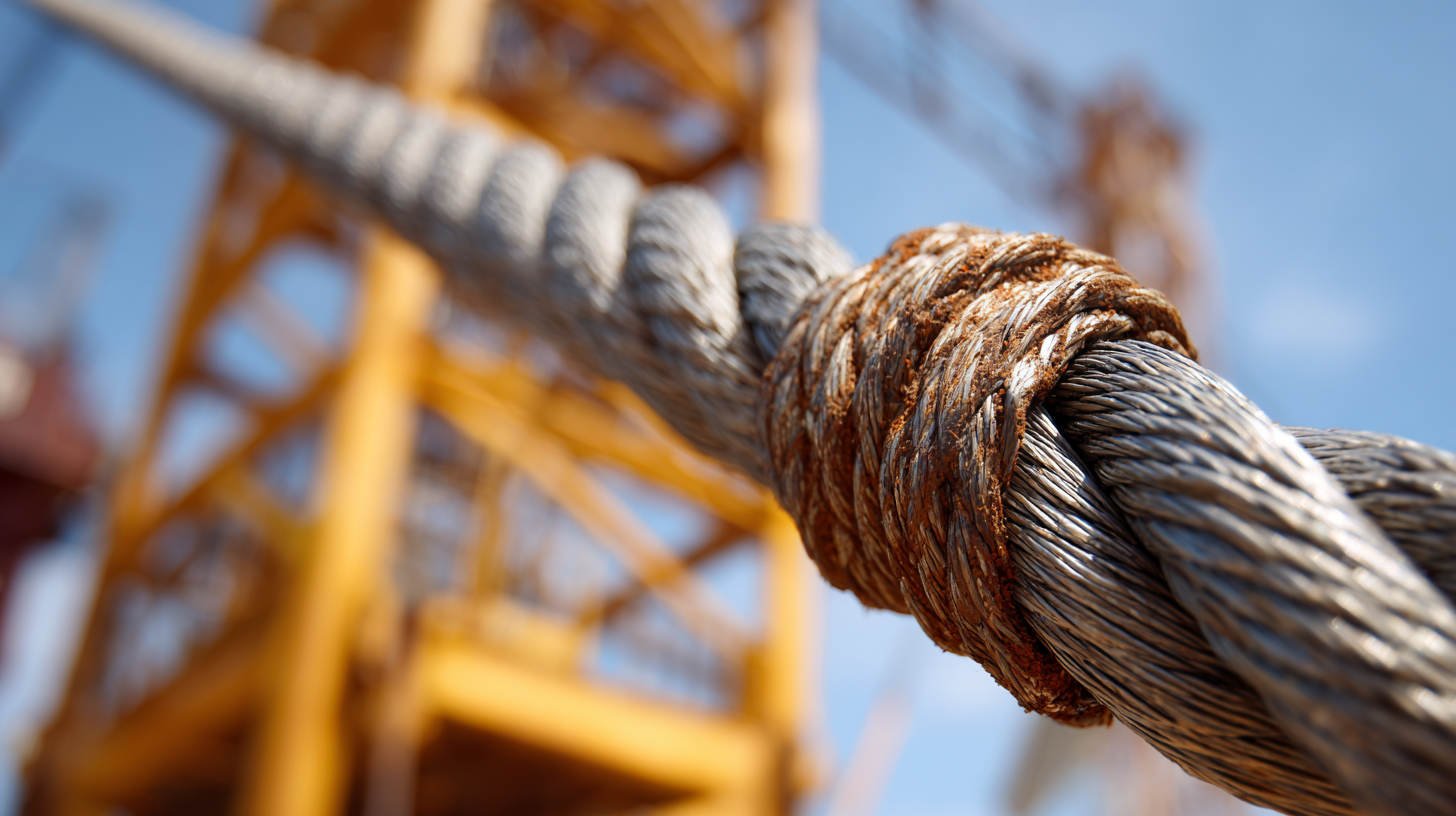How to Select Top Manufacturers for the Best Ropes Designed for Tower Cranes
When selecting ropes for tower cranes, it is crucial to prioritize quality and reliability, as these components play a vital role in the safety and efficiency of lifting operations. Ropes for tower cranes must undergo rigorous testing and meet industry standards to ensure they can withstand the demanding conditions of construction sites. This blog will guide you through the process of choosing top manufacturers who specialize in producing high-performance ropes designed specifically for tower cranes.
We'll explore essential factors to consider, such as material durability, load capacity, and manufacturer reputation. Furthermore, we will provide examples of reputable manufacturers that excel in providing ropes that enhance operational performance. By the end of this article, you will be equipped with the knowledge needed to make informed decisions when sourcing ropes for your tower crane projects, ensuring optimal safety and functionality on site.
Identifying Key Performance Indicators for Tower Crane Ropes in the Industry
When selecting top manufacturers for tower crane ropes, it is essential to focus on key performance indicators (KPIs) that ensure safety, durability, and efficiency. The first critical KPI is breaking strength, which measures how much load a rope can handle before failure. Tower cranes operate under heavy loads, making it paramount that their ropes can withstand not only the weight they lift but also dynamic forces during operation. Understanding the material composition and construction of the ropes will give insight into their breaking strength and overall performance.
Another vital KPI is abrasion resistance. Tower crane ropes operate in demanding environments where wear and tear are inevitable. Ropes that exhibit high resistance to abrasion will have a longer lifespan, reducing the frequency of replacements and maintenance costs. Additionally, flexibility plays a significant role; a rope that maintains flexibility under various conditions will reduce stress concentrations that can lead to premature failure. Evaluating these KPIs in potential manufacturers will help ensure that the selected ropes not only meet the stringent demands of tower crane operations but also align with industry safety standards.
Comparative Analysis: Leading Manufacturers of Tower Crane Ropes and Their Innovations
In the rapidly evolving landscape of the synthetic rope market, leading manufacturers are adopting innovative approaches to enhance the safety and efficiency of tower crane operations. With the global synthetic rope market projected to grow significantly, from USD 1.77 billion in 2025 to USD 3.04 billion by 2033, understanding the major players and their product offerings becomes paramount. Not only do these manufacturers focus on material advancements, but they also emphasize durability and strength, critical for the high-demand environments of construction and crane operations.
When selecting a manufacturer for tower crane ropes, consider the following tips: Firstly, investigate their commitment to research and development. Leading manufacturers often invest heavily in innovation to produce ropes that withstand extreme conditions. Secondly, look for manufacturers with a reputation for quality assurance and customer support. This ensures that you receive a product that meets industry standards and can rely on for safety. Lastly, evaluate the manufacturer's market presence and longevity, as established companies usually have a proven track record in delivering dependable ropes tailored to tower cranes.
By doing thorough research into the top manufacturers and analyzing their innovations, you can make an informed decision that not only enhances the efficiency of your operations but also prioritizes safety.
Comparative Analysis of Tower Crane Ropes' Innovations
This chart illustrates the performance and innovative features offered by leading manufacturers of tower crane ropes. The data reflects metrics such as strength, durability, flexibility, and innovation index. This analysis helps in selecting the best rope manufacturers for tower cranes.
Material Science Advances: The Impact of Rope Composition on Safety and Durability
 The safety and durability of ropes used in tower cranes are heavily influenced by the advancements in material science. The composition of the rope, whether it be synthetic fibers or steel wire, plays a critical role in its performance under stress. As per a recent report from the Global Rope Market Analysis, synthetic ropes can be up to 15 times lighter than their steel counterparts while maintaining similar tensile strength levels, making them a preferred choice for many manufacturers. This weight advantage not only enhances operational efficiency but also contributes to reduced wear and tear on crane systems, extending their overall lifespan.
The safety and durability of ropes used in tower cranes are heavily influenced by the advancements in material science. The composition of the rope, whether it be synthetic fibers or steel wire, plays a critical role in its performance under stress. As per a recent report from the Global Rope Market Analysis, synthetic ropes can be up to 15 times lighter than their steel counterparts while maintaining similar tensile strength levels, making them a preferred choice for many manufacturers. This weight advantage not only enhances operational efficiency but also contributes to reduced wear and tear on crane systems, extending their overall lifespan.
Moreover, the integration of advanced composite materials, such as aramid fibers, has shown a significant increase in resistance to abrasion and UV radiation, two primary factors that impact the longevity of ropes in outdoor environments. According to the Material Performance Journal, ropes composed of reinforced polyethylene can decrease fatigue failure rates by as much as 30% compared to traditional materials. This underscores the importance of selecting manufacturers who prioritize innovative material selections that enhance safety and durability, ensuring that tower crane operations are both effective and secure.
Market Trends: Demand for High-Performance Ropes in Construction Applications
The demand for high-performance ropes in construction applications, particularly for tower cranes, is on the rise as the industry evolves. Factors such as rapid urbanization and a growing focus on safety and efficiency have led to an increased emphasis on the quality and performance of materials used in construction. As a result, manufacturers are under pressure to innovate and provide ropes that not only meet regulatory standards but also enhance operational capabilities.
There are several market trends fueling this demand. Firstly, advancements in material technology are enabling the production of lighter yet stronger ropes, which are crucial for the heavy lifting operations of tower cranes. Moreover, there is a noticeable shift towards sustainable materials, as construction companies seek to minimize their environmental impact. As the market grows, businesses must stay ahead by aligning their product offerings with these evolving preferences, ensuring they select top manufacturers that can deliver the desired performance and sustainability in rope products essential for construction machinery.

Regulatory Standards: Ensuring Compliance in Selecting Tower Crane Ropes Manufacturers
When selecting a manufacturer for tower crane ropes, compliance with regulatory standards is paramount. The responsibility of ensuring that equipment meets safety regulations is not only a legal obligation but also a critical factor in maintaining a safe working environment. As the Occupational Safety and Health Administration (OSHA) emphasizes, adherence to safety standards greatly reduces risks associated with construction activities, including the operational use of tower cranes. Manufacturers must be well-versed in these regulations to produce ropes that are reliable, durable, and safe.
Moreover, the scrutiny on compliance within the construction industry is intensifying. Recent reports indicate that crane companies, particularly non-unionized ones, face significant pressure from safety watchdogs. This creates a heightened need for tower crane rope manufacturers to uphold the highest standards in their products. By selecting manufacturers committed to regulatory compliance, companies can mitigate risks, avoid penalties, and contribute to a safer construction landscape. It’s essential for businesses to conduct thorough assessments of potential manufacturers, ensuring that they prioritize both quality and compliance in their operations.

Home
About Us
Products
Stainless Steel Anchor Chain
Manganese Steel Lifting Chain Grade 80
Manganese Steel Lifting Chain
Hastelloy Round Bars
Hastelloy Sheet
Hastelloy steel pipe
Stainless steel wire rope
Stainless steel round
Stainless steel hexagonal rod
Stainless steel strip
Plastic coating wire rope
Stainless steel plate
Stainless steel angle
Stainless steel pipe
Stainless steel wire
Stainless steel flange
Stainless steel channel
Stainless steel flat steel
Industries
News
Service
Blog
Contact Us

 The safety and durability of ropes used in tower cranes are heavily influenced by the advancements in material science. The composition of the rope, whether it be synthetic fibers or steel wire, plays a critical role in its performance under stress. As per a recent report from the Global Rope Market Analysis, synthetic ropes can be up to 15 times lighter than their steel counterparts while maintaining similar tensile strength levels, making them a preferred choice for many manufacturers. This weight advantage not only enhances operational efficiency but also contributes to reduced wear and tear on crane systems, extending their overall lifespan.
The safety and durability of ropes used in tower cranes are heavily influenced by the advancements in material science. The composition of the rope, whether it be synthetic fibers or steel wire, plays a critical role in its performance under stress. As per a recent report from the Global Rope Market Analysis, synthetic ropes can be up to 15 times lighter than their steel counterparts while maintaining similar tensile strength levels, making them a preferred choice for many manufacturers. This weight advantage not only enhances operational efficiency but also contributes to reduced wear and tear on crane systems, extending their overall lifespan.